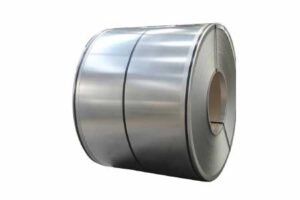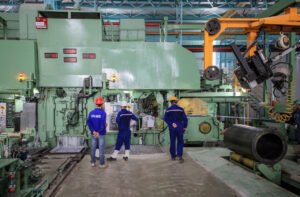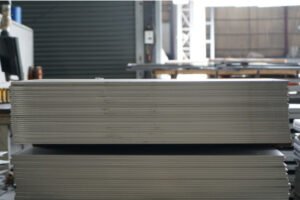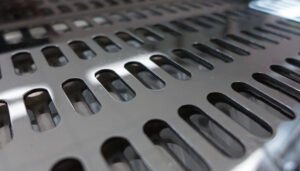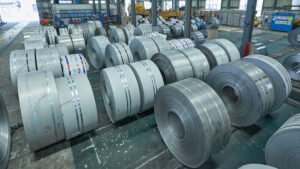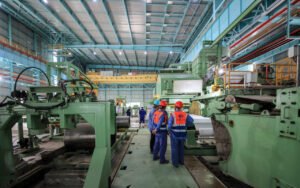How to Leverage 316L Stainless Steel for Harsh Marine Conditions
Marine environments relentlessly attack materials. This corrosion leads to costly failures and safety risks. Leveraging 316L stainless steel provides a durable, reliable, and cost-effective solution for these demanding conditions.
Leveraging 316L stainless steel for harsh marine conditions involves using its superior corrosion resistance, particularly against chlorides in saltwater. Its molybdenum content prevents pitting and ensures long-term structural integrity and low maintenance, making it the ideal choice for offshore platforms, shipbuilding, and coastal infrastructure.

As the Global Business Director at MFY, I've seen countless projects succeed or fail based on material selection. The marine industry, in particular, leaves no room for error. The constant battle against saltwater corrosion is a challenge we help our partners solve every day. Understanding why 316L is the superior choice isn't just a technical detail; it's a strategic business decision that impacts safety, budgets, and operational longevity. Let's explore how you can make this remarkable alloy work for you.
What Makes 316L Stainless Steel Ideal for Marine Use?
Choosing the wrong metal for a marine project is a massive risk. It can lead to premature degradation and catastrophic structural failure. Understanding 316L's specific properties provides the confidence to build for longevity.
The key property making 316L stainless steel ideal for marine use is its addition of molybdenum (typically 2-3%). This element significantly enhances its resistance to pitting and crevice corrosion caused by chloride ions found in seawater, a weakness in other steels like grade 304.

Let's dive deeper into the science behind this performance. It’s one thing to say a material is "good," but it's another to understand precisely why it stands up to the most corrosive environments on the planet. I remember a client in Southeast Asia building a coastal processing plant; they were initially considering grade 304 to save on initial costs. We walked them through these exact points, and they ultimately chose 316L, a decision that saved them from major maintenance headaches just a few years down the line.
The Critical Role of Molybdenum
The secret weapon of 316L is molybdenum. When stainless steel is exposed to chlorides (the salt in saltwater), it becomes vulnerable to localized corrosion, specifically pitting—small, destructive holes that can compromise a structure's integrity. Molybdenum helps to stabilize the passive layer, the invisible protective film on the steel's surface, making it much more resilient to these chloride attacks. This is the single most important factor for marine applications.
The "L" Grade Advantage
The "L" in 316L stands for "low carbon." This is crucial for welded structures. When standard stainless steel is welded, carbon can combine with chromium at the grain boundaries, a process called sensitization[^1]. This depletes the chromium needed for corrosion resistance, making the weld joint a weak point. With 316L's low carbon content, this sensitization is minimized, ensuring that the welds are just as corrosion-resistant as the rest of the material.
| Feature | Carbon Steel | 304 Stainless Steel | 316L Stainless Steel |
|---|---|---|---|
| Chloride Resistance | Poor | Fair | Excellent |
| Initial Cost | Low | Medium | High |
| Lifecycle Cost | Very High | High | Low |
| Maintenance Needs | High | Medium | Low |
What Environmental Challenges Do Marine Conditions Present?
The sea is a relentlessly harsh environment. It's not just one factor, but a combination of forces that attack your materials simultaneously. Identifying these specific threats is the first step to engineering a durable solution.
Marine conditions present a multi-faceted attack on materials, including constant saltwater spray causing chloride-induced corrosion, high humidity, biofouling from marine organisms, abrasion from sand and waves, and potential for galvanic corrosion when different metals are in contact.
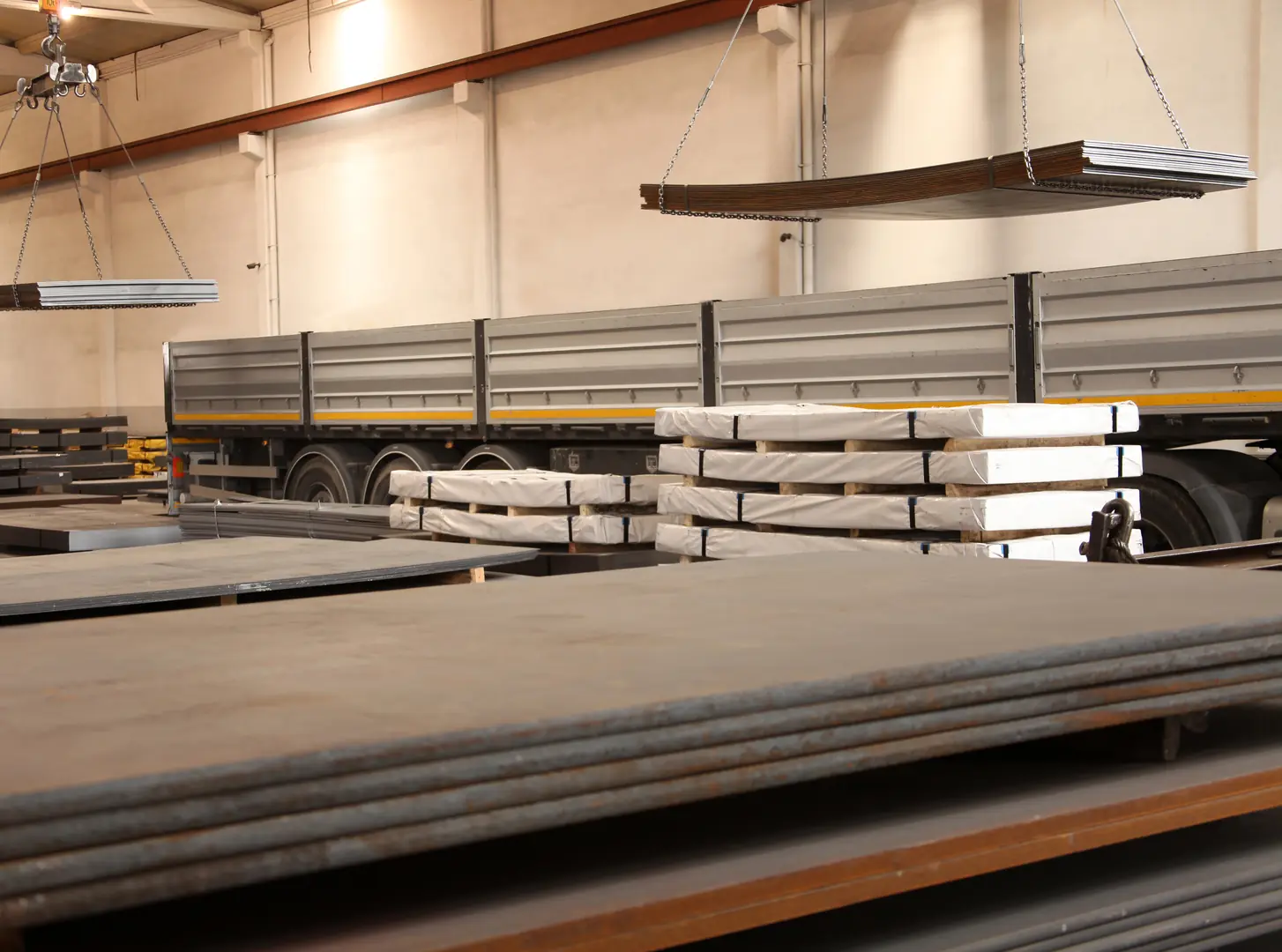
The challenges are more complex than just "salty water." Each element plays a part in a symphony of degradation that can quickly destroy lesser materials. At MFY, we don't just sell steel; we provide solutions based on a deep understanding of these environmental pressures. From the splash zone on an offshore rig to the hull of a ship, the specific challenges dictate the precise material grade and finish required.
Chloride-Induced Corrosion
This is the primary enemy. As we discussed, chlorides attack the passive layer of stainless steel, leading to pitting and crevice corrosion. Crevices, such as those under bolts or in overlapping joints, are particularly dangerous. They trap stagnant saltwater, concentrating the chlorides and accelerating the corrosive attack. 316L's molybdenum content is specifically designed to combat this.
Galvanic Corrosion
This occurs when two dissimilar metals are in electrical contact in the presence of an electrolyte, like saltwater. The less noble metal will corrode at an accelerated rate. While 316L is a relatively noble metal, careful design is needed to insulate it from less noble materials like aluminum or zinc-coated steel to prevent them from sacrificing themselves.
Biofouling and Mechanical Stress
Marine life, from algae to barnacles, can attach to surfaces. This not only adds weight and drag but can also create crevices underneath, leading to localized corrosion. Furthermore, constant mechanical stress from waves, currents, and vibrations can lead to fatigue over time. The inherent strength and smooth, cleanable surface of 316L help mitigate these physical and biological challenges, ensuring the material's performance isn't compromised.
How Do You Select the Right 316L Products for Your Needs?
Not all 316L stainless steel products are created equal. Choosing the wrong form factor or finish can compromise your project's integrity and budget. Matching the product type directly to the application is an essential step.
To select the right 316L products, you must consider the specific application. This involves choosing the correct form—such as sheets for cladding, pipes for fluid transport, or bars for structural support—and specifying a surface finish that enhances corrosion resistance and meets aesthetic requirements.
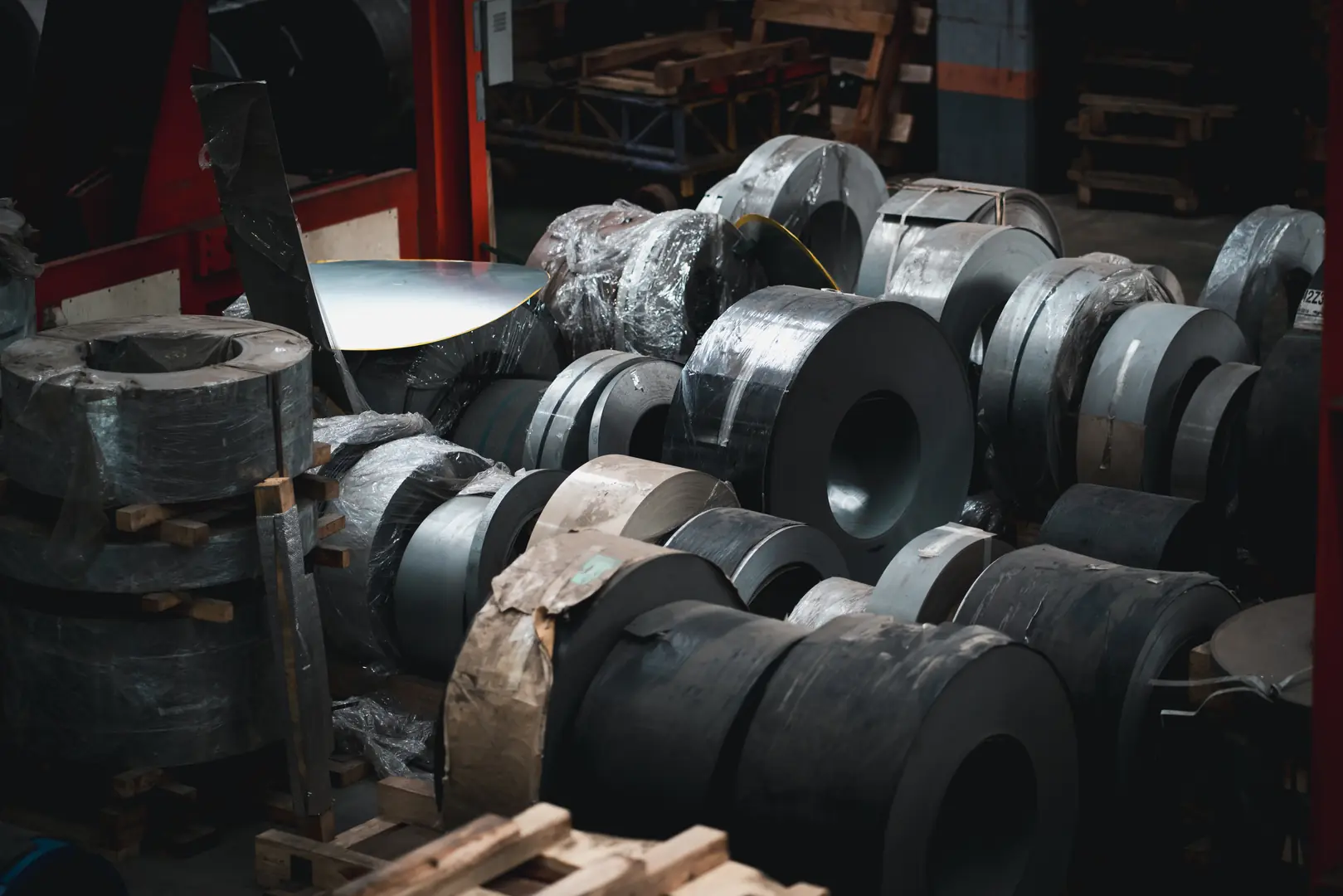
This selection process is where our expertise at MFY truly shines. We work as partners with our clients, not just suppliers. I recall working with an engineering contractor for a major desalination plant in the Middle East. They needed to transport highly corrosive brine. We didn't just supply 316L pipe; we helped them specify the exact wall thickness and weld-seam standards required to handle the high pressures and extreme corrosivity, ensuring decades of reliable service.
Application-Specific Forms
The form of the 316L product must match its function.
- Sheets and Plates: Ideal for large surface applications like ship hulls, tank fabrication, and cladding for coastal buildings.
- Pipes and Tubes: Essential for transporting fluids, from seawater intake lines to processed brine in desalination plants.
- Bars and Profiles: Used for structural components, fasteners, and supports where both strength and corrosion resistance are critical.
The Importance of Surface Finish
A smoother surface provides fewer sites for chlorides and other contaminants to cling to, which enhances corrosion resistance. A standard 2B finish is often sufficient, but for highly visible or critical applications, a polished finish like a No. 4 can offer improved performance and aesthetics. A rougher surface can trap salt particles, becoming an initiation point for corrosion.
| Application | Recommended 316L Product | Key Consideration |
|---|---|---|
| Shipbuilding (Hull/Deck) | Plate / Sheet | Strength and large surface coverage |
| Offshore Platform (Piping) | Seamless/Welded Pipe | Pressure rating and weld integrity |
| Coastal Architecture (Cladding) | Sheet / Coil | Surface finish and aesthetics |
| Desalination Plant (Vessels) | Plate / Pipe | Resistance to high-concentration brine |
What Are the Best Practices for Installing and Maintaining 316L?
Even the best material in the world can fail if handled improperly. A poor installation can ruin your investment before it even enters service. Following proven best practices ensures you get the long-term performance you paid for.
Best practices for 316L stainless steel include using dedicated tools to avoid iron contamination, employing proper welding techniques with matching filler metals, and implementing a simple maintenance schedule of regular freshwater rinsing to remove salt deposits and prevent corrosion initiation.

The phrase "low maintenance" is often misunderstood as "no maintenance." While 316L is incredibly robust, a few simple steps during installation and service life can extend its performance almost indefinitely. We always advise our clients that the care taken in the workshop and during assembly is just as important as the quality of the raw material itself. A little discipline upfront prevents enormous problems later.
Avoiding Iron Contamination
This is a critical and often overlooked step. If you use tools like grinders, brushes, or wrenches made of carbon steel on stainless steel, tiny iron particles can embed in the surface. These particles will then rust, making it look like the stainless steel itself is corroding. This is called "rouging." Always use dedicated, stainless-steel-only tools to prevent this.
Proper Welding and Post-Weld Treatment
As mentioned, 316L's low carbon content helps maintain corrosion resistance at the weld. However, it's still vital to use the correct filler metal (like 316LSi) and ensure proper shielding gas coverage. After welding, the heat-tinted area should be cleaned. This is often done through pickling and passivation[^2], a chemical process that removes contaminants and helps restore the protective passive layer to its full strength.
A Simple Maintenance Schedule
For most marine applications, the best maintenance is simple and regular. A periodic rinse with fresh water is often enough to wash away accumulated salt deposits that could otherwise concentrate and cause pitting over time. This is especially important in areas that are not regularly washed by rain.
How Can You Evaluate the Long-Term Performance of 316L in Marine Environments?
How do you prove your investment paid off years down the line? Without a structured evaluation plan, you are just guessing about the material's performance. Clear metrics and regular checks provide the data you need to manage your assets effectively.
You can evaluate the long-term performance of 316L through a combination of regular visual inspections for any signs of staining or pitting, non-destructive testing (NDT) to check material thickness and integrity, and a comprehensive lifecycle cost analysis (LCA) to quantify its financial benefits.
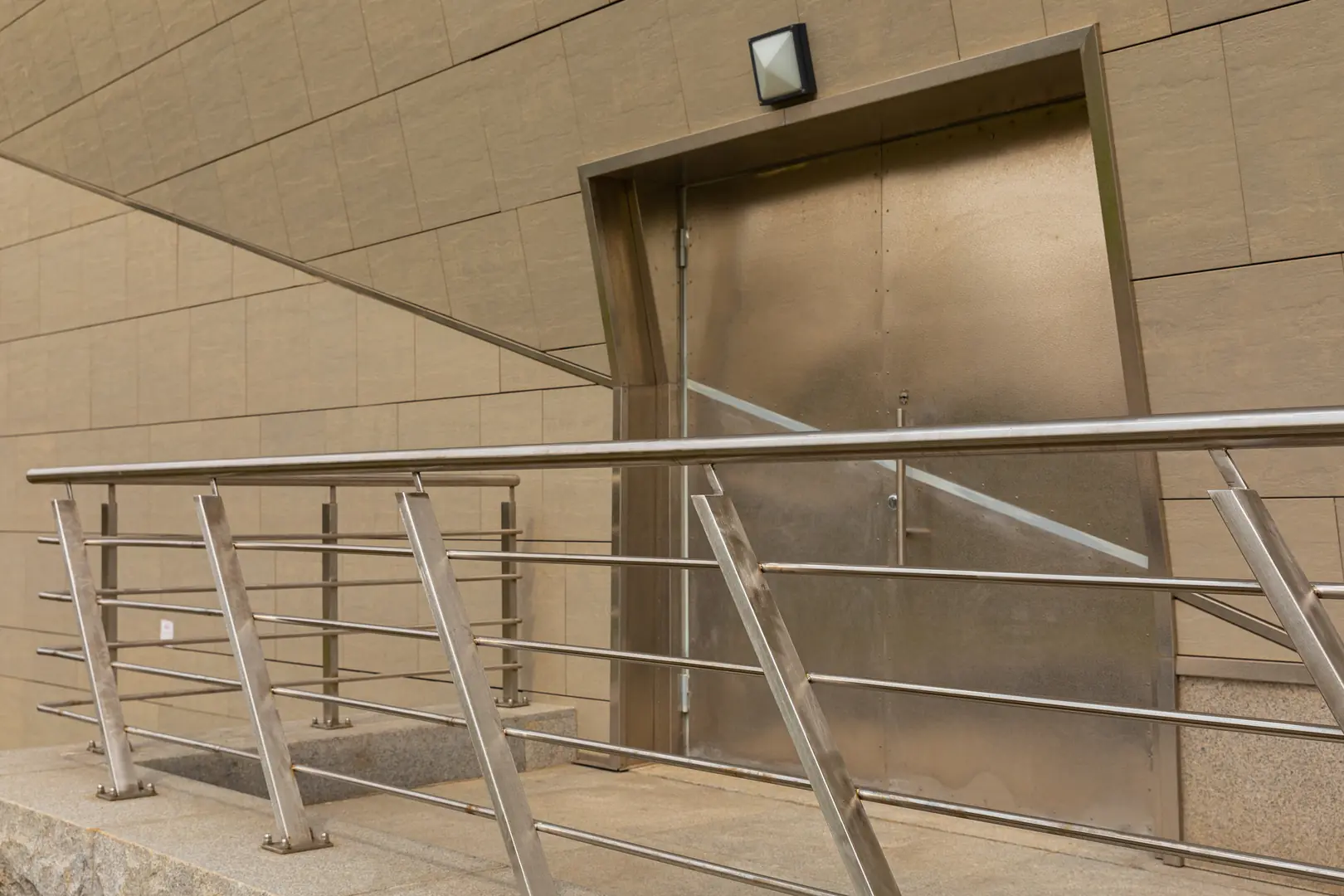
Validating the performance of 316L is key to justifying its upfront cost. This isn't just about checking for rust; it's about building a data-driven case for smart material selection. When we supply material for a major infrastructure project, we encourage our clients to think about evaluation from day one. This data not only confirms their decision but also informs future projects, creating a cycle of continuous improvement and cost optimization.
Regular Visual Inspections
The simplest method is often the most effective. Schedule periodic visual checks, paying close attention to welds, crevices, and areas with stagnant water. Look for any signs of discoloration, light brown staining (the first sign of potential issues), or obvious pitting. Early detection allows for simple cleaning and remediation before any significant damage occurs.
Non-Destructive Testing (NDT)
For critical applications, more advanced techniques can be used. Ultrasonic testing can measure the thickness of pipe or tank walls to detect any loss of material from the inside. Dye penetrant testing is an excellent way to check for microscopic surface cracks, especially around complex welds, that are not visible to the naked eye.
Lifecycle Cost Analysis (LCA)
This is the ultimate business metric. Calculate the total cost of ownership. The analysis should include the initial material cost, installation, planned maintenance (which is minimal for 316L), and the expected service life. When you compare the LCA of 316L to a material like coated carbon steel, which requires frequent repainting and eventual replacement, the financial wisdom of choosing 316L becomes undeniably clear.
Conclusion
Choosing 316L stainless steel for marine applications is a strategic decision. Its molybdenum-enhanced composition provides unmatched resistance to saltwater corrosion. This ensures structural longevity, enhances safety, and delivers a significantly lower total lifecycle cost, making it the premier material for building resiliently in harsh marine environments.
Have Questions or Need More Information?
Get in touch with us for personalized assistance and expert advice.

